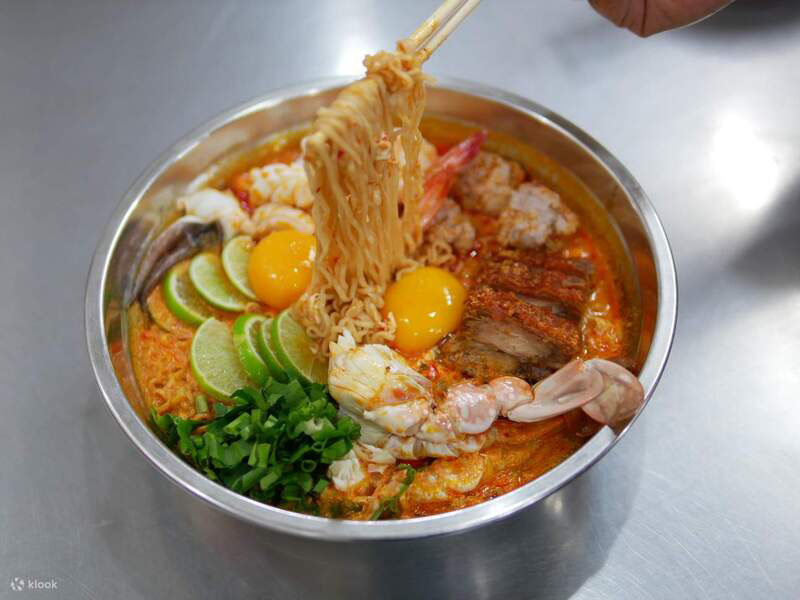Mclub World – Food tourism was once hailed as the perfect fusion of travel and gastronomy. From street food in Bangkok to Michelin-starred restaurants in Paris, people sought out unique dining experiences. These culinary adventures promised cultural immersion and unforgettable memories. But in recent years, food tourism appears to be facing new hurdles. Its former allure seems to be losing its edge for various reasons.
Rising Costs Limit Access to Culinary Travel
Traveling for food is no longer as affordable as it once was. With global inflation affecting airfare, accommodations, and dining prices, food tourists find it harder to plan trips. Once-cheap meals in Southeast Asia have grown significantly more expensive. Budget travelers now hesitate to spend large sums just to experience exotic cuisines. As costs rise, culinary tourism becomes a luxury for fewer people. This exclusivity gradually erodes its wide appeal.
“Read More: Top 10 Clubs Entertainment in Jakarta, Biggest Nightclub and Crazy Party Location”
Overcommercialization Diminishes Authentic Experiences
What was once a raw, authentic encounter with local food has turned into a commercialized industry. Many food tours follow generic itineraries that feel repetitive and uninspired. Restaurants increasingly cater to tourists, adjusting menus to foreign tastes. The original charm of food tourism—discovery and local flavor—fades under pressure from mass tourism. Travelers often end up in overcrowded spots with standardized dishes that feel inauthentic.
Health and Dietary Restrictions Create New Barriers
Food tourism is not always inclusive of travelers with dietary limitations. Vegan, vegetarian, kosher, halal, gluten-free, and allergy-sensitive eaters struggle to enjoy local delicacies. Many food tours don’t adapt their menus for such needs. As health consciousness grows, more travelers seek control over what they consume. This makes spontaneous food exploration less feasible. Instead of adventure, it becomes a cautious calculation, reducing the joy once associated with culinary discovery.
“Read About: Billie Eilish Reigns Supreme at the American Music Awards”
Social Media Saturation and Filter Fatigue
Instagram once elevated food tourism to global fame. Viral food pictures and videos attracted millions to destinations. But now, overexposure has led to boredom. Seeing the same bowls of ramen or the same food stalls across countless posts dulls the excitement. Travelers become more skeptical, wondering if a meal is truly worth the hype. The pressure to photograph every bite also distracts from actually enjoying the moment. As visual fatigue sets in, the magic starts to fade.
Environmental Concerns and Ethical Questions
Sustainability is now a core value for many travelers. Flying across continents to eat a bowl of noodles is increasingly viewed as irresponsible. Additionally, sourcing exotic ingredients and supporting meat-heavy cuisines raise environmental red flags. Ethical travelers question whether culinary indulgence justifies the carbon footprint. Many choose plant-based, local, or low-impact alternatives, which may not align with traditional food tourism practices.
Culinary Tourism Struggles with Innovation
New trends have emerged in other travel sectors, but food tourism seems stuck. While digital nomadism, eco-lodging, and virtual tours evolve quickly, culinary travel follows the same patterns. Eat, snap a photo, write a review. Without fresh concepts or immersive storytelling, food tourism risks becoming stagnant. The excitement of “what’s new” is lost. People crave unique narratives, not just a checklist of dishes to consume.
Local Backlash Against Tourism Growth
In several destinations, locals are pushing back against tourism. Crowds, price inflation, and cultural dilution frustrate residents. In food-centric cities like Barcelona, Kyoto, and Oaxaca, local dining scenes suffer under tourist overload. Beloved food spots become tourist traps. In response, some communities restrict food tours or ban filming inside eateries. Tourists may feel unwelcome or disconnected, diminishing the sense of cultural exchange food travel once promised.
Pandemic Effects on Eating Abroad
COVID-19 reshaped how we view public eating and international travel. Hygiene awareness has increased dramatically. Shared food experiences or crowded food markets now seem risky. Many people have become more cautious, even post-pandemic. As a result, some opt for private dining or domestic food experiences instead. Fear of illness—once a minor concern—has become a significant deterrent for culinary tourists.
Rise of Virtual and At-Home Culinary Experiences
With platforms like MasterClass, YouTube, and virtual cooking tours, food lovers can now learn and explore from home. Celebrity chefs and cultural recipes are available at the click of a button. People can cook Indonesian rendang or Italian pasta in their own kitchen, skipping the need to travel. These digital options are convenient, cost-effective, and customizable. As virtual experiences improve, fewer people feel the need to go abroad just for food.
Shifting Priorities Among Younger Travelers
Younger generations value purpose-driven travel. While food remains important, it no longer defines their trips. Millennials and Gen Z prioritize climate impact, personal growth, or social justice when they plan vacations. A simple delicious meal may not be enough anymore. Instead, they seek experiences that align with their identity and values. Food tourism, once at the center of travel culture, now struggles to keep up with shifting priorities.




